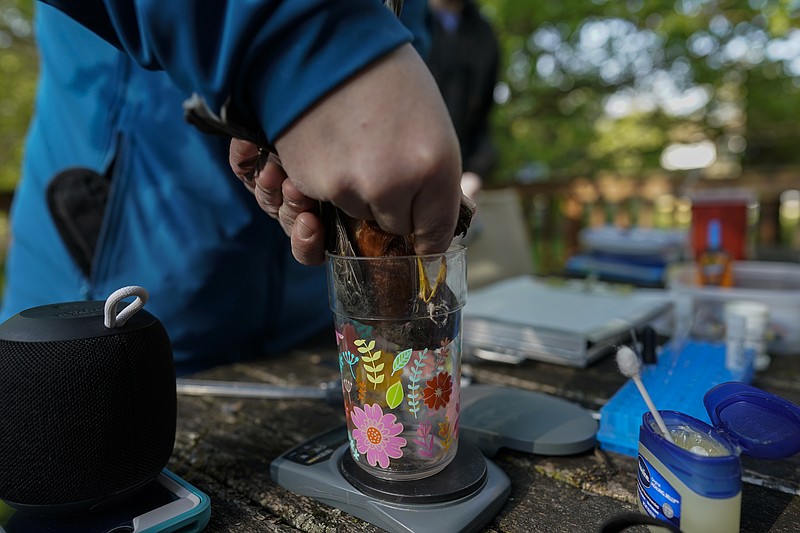TAKOMA PARK, Md. -- Putting beacons on birds is not novel. But a new antenna on the International Space Station and receptors on the Argos satellite, plus the shrinking size of tracking chips and batteries, are allowing scientists to remotely monitor songbird movements in much greater detail than ever before.
"We're in a sort of golden age for bird research," said Adriaan Dokter, an ecologist at Cornell University. "It's pretty amazing that we can satellite-track a robin with smaller and smaller chips. Ten years ago, that was unthinkable."
As researchers deploy precision tags, Martin Wikelski, director of the Max Planck Institute of Animal Behavior, envisions the development of "an 'Internet of animals' -- a collection of sensors around the world giving us a better picture of the movement of life on the planet."
The American robin is an iconic songbird in North America, its bright chirp a harbinger of spring. Yet its migratory habits remain a bit mysterious to scientists.
"It's astounding how little we know about some of the most common songbirds," said Ken Rosenberg, a conservation scientist at Cornell University. "We have a general idea of migration, a range map, but that's really just a broad impression."
[Video not showing up above? Click here to watch » https://www.youtube.com/watch?v=OyErHOVIKRg]
An earlier study that ecologist Emily Williams worked on showed some robins are long-distance migrants -- flying more than 2,780 miles between their breeding area in Alaska and winter grounds in Texas -- while others hop around a single backyard most of the year.
What factors drive some robins to migrate, while others don't? Does it have to do with available food, temperature fluctuations or success in mating and rearing chicks?
Williams hopes more detailed data from satellite tags, combined with records of nesting success, will provide insights, and she's working with partners who are tagging robins in Alaska, Indiana and Florida for a three-year study.
Scientists have previously put GPS-tracking devices on larger raptors, but the technology has only recently become small and light enough for some songbirds. Tracking devices must be less than 5% of the animal's weight to avoid encumbering them.
In a Silver Spring, Md., yard, Williams has unfurled nylon nets between tall aluminum poles. When a robin flies into the net, she delicately untangles the bird. Then she holds it in a "bander's grip" -- with her forefinger and middle finger loosely on either side of the bird's neck, and another two fingers around its body.
On a tarp, she measures the robin's beak length, takes a toenail clipping and plucks a tail feather to gauge overall health.
Then she weighs the bird in a small cup on a scale and fashions a makeshift saddle with clear jewelry cord looped around each of the bird's legs. She then tightens the cord so the tag sits firmly on the bird's back, and then she lets it fly off.
In addition to providing very precise locations, the satellite tags transmit data that can be downloaded from afar onto Williams' laptop. The data on older tags couldn't be retrieved unless the same bird was recaptured the following year -- a difficult and uncertain task.
Wikelski hopes the new technology will help scientists better understand threats birds and other creatures face from habitat loss, pollution and climate change.
"It is detective work to try to figure out why a population is declining," said Ben Freeman, a biologist at the Biodiversity Research Centre at the University of British Columbia. Better information about migration corridors "will help us look in the right places."
A 2019 study co-written by Cornell's Rosenberg showed that North America's population of wild birds declined by nearly 30%, or 3 billion, since 1970.
He said tracking birds will help explain why: "Where in their annual cycles do migratory birds face the greatest threats? Is it exposure to pesticides in Mexico, the clearing of rain forests in Brazil or is it what people are doing in their backyards here in the U.S.?"









